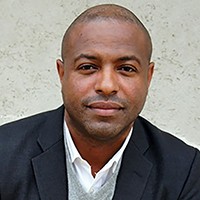Why COVID-19 Damages Some Communities More Than Others
The pandemic is having a disproportionate effect on New York's black and Latinx populations.

COVID-19 is devastating particular communities globally. Here in the United States, where New York City is the epicenter of the pandemic, preliminary data released by the city shows that Latinx and black populations are dying at disproportionate rates. For example, the Latinx population is 29 percent of New York’s population, but it has accounted for 34 percent of COVID-19 deaths, and the city’s black population is 22 percent, but has accounted for 28 percent of deaths. Moreover, it has been widely reported that Latinx and blacks may be dying at disproportionate COVID-19 rates because they may be more likely to have “underlying conditions” or “comorbidities” compared to other groups.
Insufficient attention is paid to how racial and social determinants can negatively impact health and contribute to an increased rate of “underlying conditions,” which make certain populations more at risk of dying. For example, research studies have shown that poverty, racism, inadequate housing, environmental toxins and lack of access to such things as health insurance, quality medical care, good education, economic opportunities and nutritious food can influence health and well-being at the individual and population levels. These factors have harmful influences on the “neurodevelopmental and biological consequences” beginning early in life that accumulate and produce disease.
The neighborhoods most affected by COVID-19 tend to be poorer. According to the New York City Comptroller’s Office, 75% of all frontline workers are people of color, who work in public transit; grocery, convenience and drug stores; trucking, warehouse and postal services; and healthcare, as well as childcare, homeless shelters and family services. Nearly 60% of these workers are also renters and, on average, spend 1.5 hours commuting on public transport to and from their jobs daily.
In my research at the intersection of urban planning and health equity, I explore how neighborhood environments and access to resources can affect health. The physical characteristics and quality of neighborhood services—schools, transportation, food, employment opportunities—can result in better economic outcomes and well-being. The fact that underlying conditions can increase the risk of death from COVID-19 is not simply attributable to individual behaviors, but represents a failure in our society to develop and implement policy interventions that address the social determinants of health and reduce inequities.
Public health studies show that interventions targeted at addressing these social inequities can improve overall population health. Such interventions include improving access to quality education and early childhood development programs; investing in the physical environment to enable activities such as walking and bicycling, with open space and recreational centers; safe, affordable housing; improving community-based health facilities; and promoting nutrition and increased awareness of healthy diets. Additional help is provided by income enhancements and opportunities like the Supplemental Nutrition Program for Women, Infants and Children, the Earned Income Tax Credit and Supplemental Security Income.
The disparate outcomes for black and Latinx populations during the COVID-19 crisis highlight how we need to invest in such policies and programs to address the pressing needs of the most vulnerable members of society. That includes providing adequate medical testing, along with financial and material support to frontline healthcare professionals. Extending unemployment insurance, paid sick leave, financial support for small business owners and access to universal health insurance is essential now.

Malo Hutson is an associate professor in urban planning at the Graduate School of Architecture, Planning and Preservation and director of its Urban Community and Health Equity Lab. He is also the director of project development at Columbia World Projects. This column is editorially independent of Columbia News.